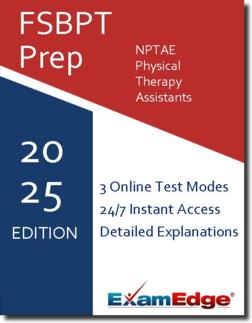NPTAE Practice Tests & Test Prep - Topics
Based on 32 Reviews
- Real Exam Simulation: Timed questions and matching content build comfort for your NPTAE Physical Therapy Assistants test day.
- Instant, 24/7 Access: Web-based National Physical Therapy Assistants Examinations practice exams with no software needed.
- Clear Explanations: Step-by-step answers and explanations for your FSBPT exam to strengthen understanding.
- Boosted Confidence: Reduces anxiety and improves test-taking skills to ace your National Physical Therapy Assistants Examinations (NPTAE).

Understanding the exact breakdown of the National Physical Therapy Assistants Examinations test will help you know what to expect and how to most effectively prepare. The National Physical Therapy Assistants Examinations has 200 multiple-choice questions The exam will be broken down into the sections below:
| National Physical Therapy Assistants Examinations Exam Blueprint | ||
|---|---|---|
| Domain Name | % | Number of Questions |
| Clinical Application of Physical Therapy Principles and Foundational Sciences | 40% | 80 |
| Data Collection Interventions Equipment and Devices;Therapeutic Modalities | 48% | 96 |
| Safety, Protection, and Professional Roles; Teaching and Learning; Evidence Based Practice | 12% | 24 |


